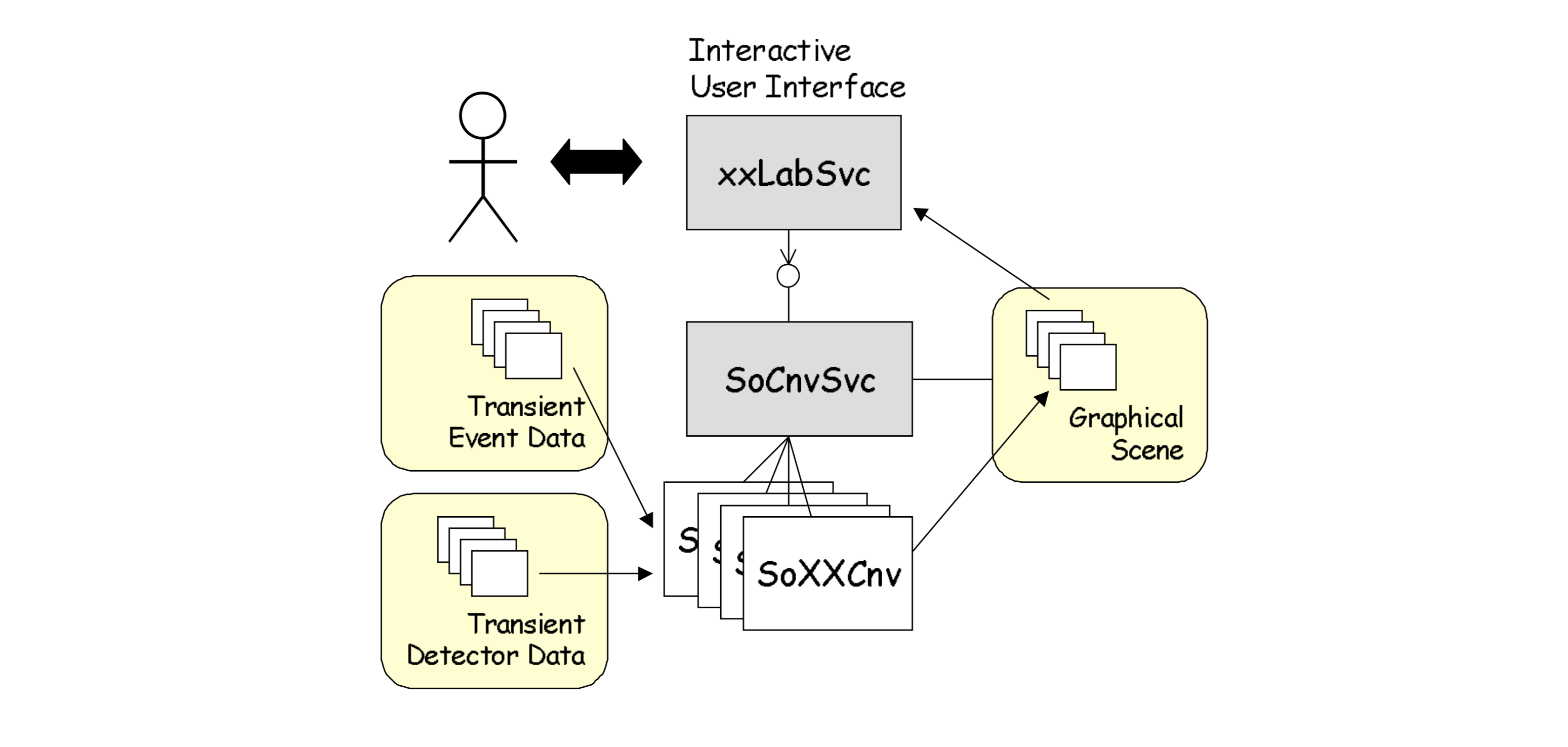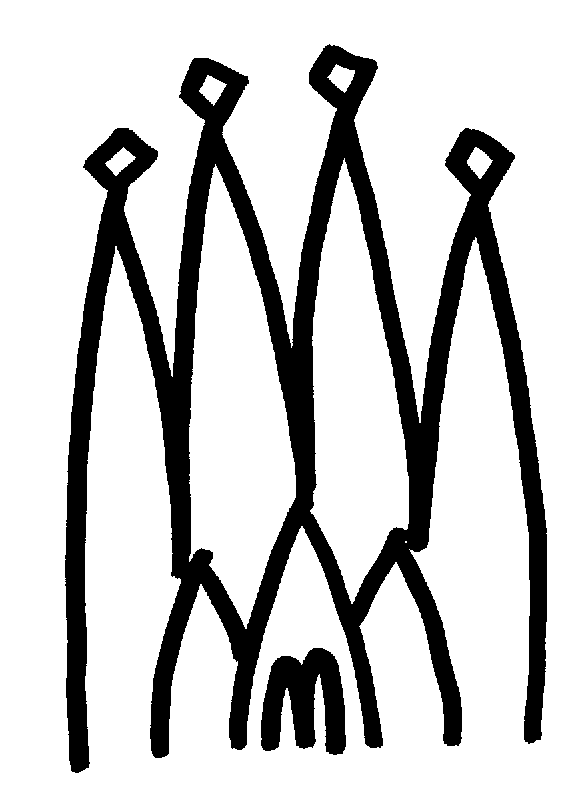16. Visualization Facilities¶
16.1. Overview¶
In this chapter we describe how visualization facilities are provided to the applications based on the Gaudi framework. A prototype implementation (GaudiLab) exists in LHCb but is not distributed with the framework. It is based on the packages that constitute the Open Scientist suite (OpenGL, OpenInventor(soFree), Lab,… see http://www.lal.in2p3.fr/OpenScientist/). An event and geometry display application has been built using these facilities.
16.2. The data visualization model¶
The Gaudi architecture envisaged implementing data visualization using a similar pattern to data persistency. We do not want to implement visualization methods in each data object. In other words, we do not want to tell an object to “draw” itself. Instead we would implement converters as separate entities that are able to create specific graphical representations for each type of data object and for each graphical package that we would like to use. In that way, as for the persistency case, we decouple the definition and behaviour of the data objects from the various technologies for graphics. We could configure at run time to have 2D or 3D graphics depending on the needs of the end-user at that moment.
Fig. 16.1 illustrates the components that need to be included in an application to make it capable of visualizing data objects (the “So” prefix in the names is taken from the GaudiLab implementation). The interactive user interface is a Service which allows the end-user to interact with all the components of the application. The user could select which objects to display, which algorithms to run, what properties of which algorithm to inspect and modify, etc. This interaction can be implemented using a graphical user interface or by using a scripting language.
The User interface service is also in charge of managing one or more GUI windows where views of the graphical representations are going to be displayed.

Fig. 16.1 Components for visualization**¶
The other main component is a Conversion Service that handles the conversion of objects into their graphical representation. This service requires the help of a number of specialized converters, one for each type of data object that needs to be graphically displayed. The transient store of graphical representations is shared by the conversion service, together with the converters, and the user interface component. The form of this transient store depends on the choice of graphics package. Typically it is the user interface component that would trigger the conversion service to start the conversion of a number of objects (next event), but this service can also be triggered by any algorithm that would like to display some objects.
